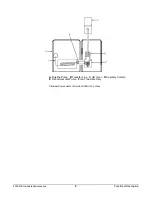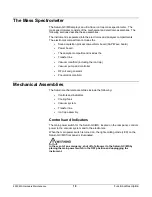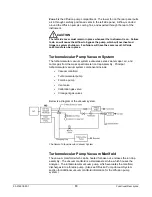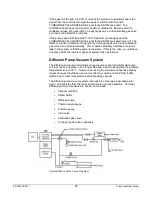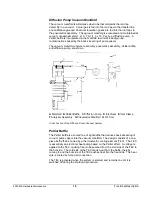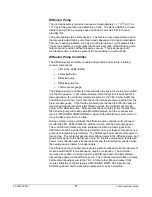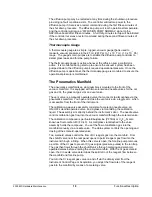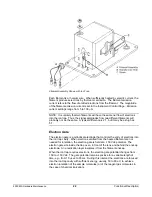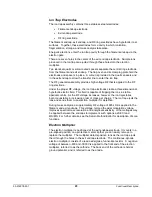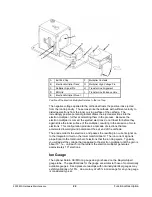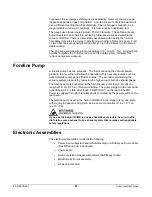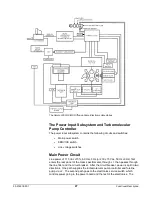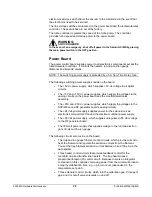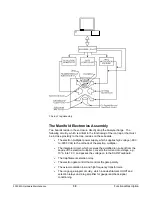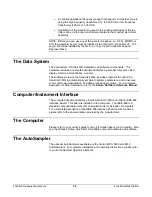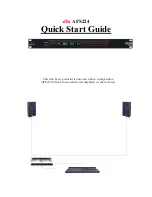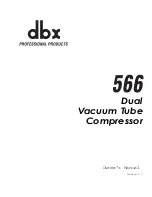
2000 MS Hardware Maintenance
18
Functional Description
The diffusion pump may be restarted at any time during the shutdown procedure
providing no fault condition exists. The controller will restore power to the
diffusion pump if it receives a restart command during the first fifteen minutes of
the shut down procedure. The diffusion pump will reach operational temperature,
and the controller will issue a “DIFFUSION PUMP NORMAL” signal to the
SAP/Wave board after fifteen minutes. A full thirty-minute start up will be initiated
if the controller receives a restart command during the second fifteen minutes of
the shut down procedure.
Thermocouple Gauge
A thermocouple gauge is a simple, rugged, vacuum gauge that is used to
measure vacuum pressures in the 2 Torr (267 Pa) to 1 x 10
-3
Torr (1.3 x 10
-1
Pa)
range. The gauge’s main purpose is to enable the diffusion pump controller to
detect gross leaks and foreline pump failure.
The thermocouple gauge is active whenever the diffusion pump controller is
active. It is monitored during start up to ensure the vacuum system has been
pumped down to the diffusion pump’s required operational pressure. Once the
diffusion pump is operational, the thermocouple gauge is monitored to ensure the
operational pressure is maintained.
The Pneumatics Manifold
The pneumatics manifold is an aluminum block mounted to the front of the
vacuum manifold. It is equipped with two solenoid and needle valves for the cal
gas and CI, the glass cal gas vial, and vent valve.
The vent valve is a manually operated valve that connects to atmosphere via the
pneumatics manifold. You open and close the vent valve via a toggle arm, which
is accessible from the front of the instrument.
The calibration-gas-valve assembly consists of a metering needle valve, an
ON/OFF solenoid-operated valve, and a glass vial containing the calibration
liquid. The assembly sits directly behind the instrument’s door. The needle valve
controls calibration gas flow into the vacuum manifold through the solenoid valve.
The calibration compound is perfluorotributylamine (PFTBA) or C
12
F
27
N, also
known as fluorocarbon-43 (FC-43). A small glass vial attached to the valve
assembly holds the compound. You set the flow of calibration gas into the
manifold manually via a needle valve. The data system controls the opening and
closing of the solenoid-operated valve.
Two solenoid valves control the flow of CI reagent gas into the manifold. First,
the shutoff valve near the rear panel opens to permit reagent gas flow into the
instrument through a fitting. When this valve is open, the foreline pump removes
a portion of the CI gas to prevent CI gas surges (pressure pulses) in the ion trap.
The gas then flows through the shutoff valve through metering and solenoid-
operated valves before entering the vacuum manifold. With the CI gas solenoid
open, the CI needle valve determines the split ratio of the reagent flow between
the manifold and foreline pump.
You turn the CI reagent gas valve on and off via the data system from the
Instrument Control Page or Acquisition, you adjust the flow rate of the reagent
gas into the manifold by means of a metering valve.





